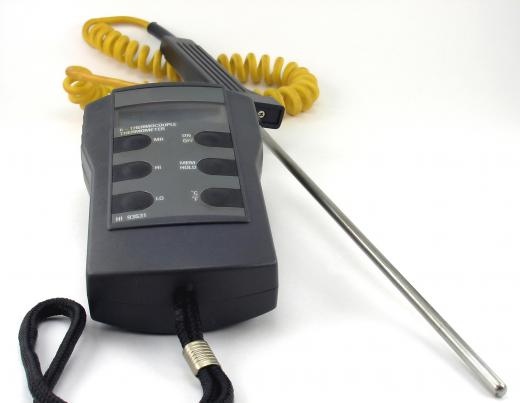Distributed temperature sensing is the use of fiber optic cables to detect temperature differences in electrical systems, tunnels, underground wells and lakes or streams. Fiber optic cables use a laser to transmit a specific light wavelength along the cable length. Changes in strain or temperature cause the laser light to scatter, and detection systems and software allow the determination of the location and amount of temperature difference with excellent accuracy.
Using fiber optic distributed temperature sensing, temperatures can be monitored over long distances, making it an ideal technology for temperature monitoring in remote or below-ground applications. The light-scattering characteristics of fiber optics can also measure cable strain as well as temperatures. Distributed temperature sensing can be paired with strain measurement for monitoring pipelines or dams for leakage.

Fiber optic cables use silicon dioxide glass fibers with a particular molecular arrangement that permits laser light to travel long distances with little reduction in strength. Local temperatures outside the fiber cable change the glass fiber molecular structure and can be measured by corresponding changes in the back-scattered light measured at either end of the optic cable. Light detectors and software programs are used to measure and quantify the amount of light that scatters and thus the local temperature change. The properties of the fiber optic cable also permit the location of the temperature change to be calculated with good accuracy.

Distributed temperature sensing systems have been deployed that can monitor temperatures over distances in excess of 18 miles (30 km). Fiber optics also tend to be durable, are resistant to electrical interference and can be used in temperatures of more than 700° Fahrenheit (about 370° Celsius). Unlike thermocouples or infrared temperature systems, distributed temperature sensing is continuous over the entire fiber optic length. The software can show the temperatures anywhere in the fiber optic cable on a continuous basis, not just at specific points.
The only material that needs to be installed over long distances is the optical cable, so with the monitoring sensors and software analysis installed with the laser transmission equipment, installation and maintenance costs are low. Fiber optic light scattering effects do not require exotic materials or special cables, so fiber optic cables used for telecommunications can also, in theory, be used to monitor temperatures. This combination of uses for fiber optics saw growing interest in the early 21st century for environmental monitoring of land and water resources, particularly because fiber optic networks have been rapidly spreading out for high-speed telecommunications and Internet connectivity.
